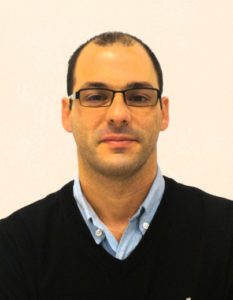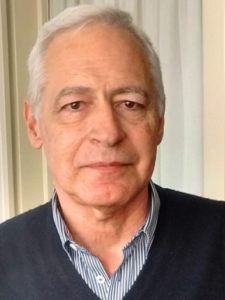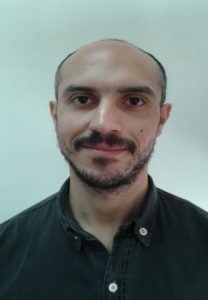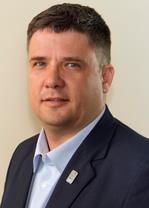 Ricardo José Scorza, Ingeniero Metalúrgico, Técnico Químico Nacional. Jefe del laboratorio Central de la planta Córdoba de Volkswagen Argentina S.A. Jefe de trabajos prácticos de mecánica de los fluidos en Ingeniera Metalúrgica UTN-FRC. Especialista en administración y organización de laboratorios de ensayos de materiales. Experto en tratamientos térmicos convencionales y de vacío para aceros de baja aleación.
Ricardo José Scorza, Ingeniero Metalúrgico, Técnico Químico Nacional. Jefe del laboratorio Central de la planta Córdoba de Volkswagen Argentina S.A. Jefe de trabajos prácticos de mecánica de los fluidos en Ingeniera Metalúrgica UTN-FRC. Especialista en administración y organización de laboratorios de ensayos de materiales. Experto en tratamientos térmicos convencionales y de vacío para aceros de baja aleación.
Abstract of semiplenary conference:
Low Pressure Vacuum Carburizing Heat Treatment
To obtain toothed components, gears mainly, in the automotive industry, in particular where is used steels like SAE 8620 and its variants, the thermal treatment is currently dominated by two types of technologies. One of these technologies is the carburizing in gaseous atmosphere, commonly named Endogas with direct injection of gas, like natural gas, propane or other gases, with a final oil quenching; this type of process is called conventional treatment. On the other hand a second technology is a vacuum carburizing, which every day becomes more weight in the world, with the possibility of combining this method of cementation with high pressure gas quenching, eliminating the need to use quenching oils. The Technology of vacuum cementation with gas quenching offers some advantages over conventional treatments.
For the development of this subject will be exposed the following topics: Introduction to heat treatment technology of low vacuum carburizing of low alloy steels for cementation. Main characteristics of the equipment needed. Physic aspect cementation process. Metallurgical aspects of the process, form of absorption and diffusion of carbon, control parameters cementation, computerized process modeling, prediction and measurement of results. High pressure gas quenching. Comparative of advantages and disadvantages between vacuum carburizing and conventional treatment furnaces.
 Jorge Alberto Halabi, Ingeniero Metalúrgico – Universidad Católica Córdoba – 1975. Gerente de Planta de Tratamientos Térmicos Sudosilo S.A. – Tratamientos térmicos e Ingeniería de Superficie. Docente Titular de Materiales II y Procesos Industriales – Univ. Católica de Córdoba. Director de Proyecto de Investigación en “Desarrollo de materiales compuestos basados en polímeros biodegradables” – Univ. Católica de Córdoba. Con amplia experiencia en tratamientos térmicos y termoquímicos de aleaciones metálicas. Participación en diversos desarrollos de proceso de tratamientos térmicos con Atmósfera Controlada, Nitrocarburación Gaseosa Profunda, Templado por Inducción y combinación de éstos procesos, como también tratamiento de aleaciones livianas, CVD (Chemical Vapor Deposition), etc. Responsable de desarrollo del proyecto de PVD (Physical Vapor Deposition) en Sudosilo S.A. destinado a la aplicación de revestimientos con capas cerámicas delgadas de compuestos basados en Nitruros y Carbonitruros de Titanio, Cromo, Aluminio y sus combinaciones e integración de los mismos en multicapas nanométricas. Cuenta con publicaciones tanto de divulgación como con referato en revistas científicas. Ha participado en conferencias como invitado en la Univ. Del Valle en Cali, Colombia y en Río de Janeiro por la Asociación Brasilera de Metales. Ha asistido a numerosas Conferencias internacionales sobre su especialidad en diversos países. Ha dictado cursos y conferencias en ámbitos nacionales como Instituto Argentino de Siderurgia, Comisión de Energía Atómica, INTI, UTN, Univ. Católica de Córdoba, Fundación Argentina de Nanotecnología, además de otros en el ámbito privado.
Jorge Alberto Halabi, Ingeniero Metalúrgico – Universidad Católica Córdoba – 1975. Gerente de Planta de Tratamientos Térmicos Sudosilo S.A. – Tratamientos térmicos e Ingeniería de Superficie. Docente Titular de Materiales II y Procesos Industriales – Univ. Católica de Córdoba. Director de Proyecto de Investigación en “Desarrollo de materiales compuestos basados en polímeros biodegradables” – Univ. Católica de Córdoba. Con amplia experiencia en tratamientos térmicos y termoquímicos de aleaciones metálicas. Participación en diversos desarrollos de proceso de tratamientos térmicos con Atmósfera Controlada, Nitrocarburación Gaseosa Profunda, Templado por Inducción y combinación de éstos procesos, como también tratamiento de aleaciones livianas, CVD (Chemical Vapor Deposition), etc. Responsable de desarrollo del proyecto de PVD (Physical Vapor Deposition) en Sudosilo S.A. destinado a la aplicación de revestimientos con capas cerámicas delgadas de compuestos basados en Nitruros y Carbonitruros de Titanio, Cromo, Aluminio y sus combinaciones e integración de los mismos en multicapas nanométricas. Cuenta con publicaciones tanto de divulgación como con referato en revistas científicas. Ha participado en conferencias como invitado en la Univ. Del Valle en Cali, Colombia y en Río de Janeiro por la Asociación Brasilera de Metales. Ha asistido a numerosas Conferencias internacionales sobre su especialidad en diversos países. Ha dictado cursos y conferencias en ámbitos nacionales como Instituto Argentino de Siderurgia, Comisión de Energía Atómica, INTI, UTN, Univ. Católica de Córdoba, Fundación Argentina de Nanotecnología, además de otros en el ámbito privado.
Abstract of semiplenary conference:
Ceramic Physical Vapor Deposition
The thin film coatings applied in a vapor phase are part of a large family of processes ranging from a simple coatings film produced by the sublimation of an element in a vacuum environment and its condensation on a substrate, up to ceramic high temperature hard coatings, synthesized as a result of the activation of electric plasma. The PVD (Physical Vapor Deposition) cover this family of processes.
The fields associated with this technique include decorative applications, improvement of mechanical strength, corrosion protection, uses in electronics and medicine among others. They are thin films ranging from a few atomic layers to some micrometers, depending on the process.
Varying degrees of complexity arise depending if direct evaporation, reactive evaporation or the activated reactive evaporation is applied. Also, the evaporation method of the components, the substrate-coating compatibility, the vacuum and polarization levels are key variables that constitutes the final applied product characteristics.
 Víctor Alejandro Burgueño, es ingeniero en materiales egresado del Instituto Sábato y especialista en calidad industrial egresado del Instituto de Calidad Industrial (INCALIN). Es especialista en soldadura reconocido por la American Welding Society, ASME y el Instituto Internacional de Soldadura. Es inspector de soldaduras certificado nivel III. Desarrolla su actividad principal en el Instituto Nacional de Tecnología Industrial (INTI) a cargo del Ente de certificación de soldadores y procedimientos de soldadura.
Víctor Alejandro Burgueño, es ingeniero en materiales egresado del Instituto Sábato y especialista en calidad industrial egresado del Instituto de Calidad Industrial (INCALIN). Es especialista en soldadura reconocido por la American Welding Society, ASME y el Instituto Internacional de Soldadura. Es inspector de soldaduras certificado nivel III. Desarrolla su actividad principal en el Instituto Nacional de Tecnología Industrial (INTI) a cargo del Ente de certificación de soldadores y procedimientos de soldadura.
Abstract of semiplenary conference:
Actual state and improving matters on welding quality on the metalworking industry
Generally welding processes are widely used by the metalworking industry, both for manufacturing and for repairing activities. Welded product quality depends mainly on the quality of the welds. In this regard the risks associated to welding are four types of deviations: imperfections, distortion, residual stresses and metallurgical changes. The fact that the metallurgical changes are impossible to be evaluated, without destroying the workpiece, makes the welding process is considered as a special process for most industrial welding. At this conference will be presented the tools available in the Argentine market for control of welds and their application in the industry in general.
 Jorge Ernesto Schneebeli es ingeniero mecánico egresado de la Facultad de Ingeniería de la Universidad de Buenos Aires y especialista en calidad industrial egresado del Instituto de Calidad Industrial (INCALIN). Es especialista en Ensayos No Destructivos, calificado en los métodos de Ultrasonidos, Radiografía Industrial, Líquidos Penetrantes, Partículas Magnetizables y Corrientes Inducidas. Desarrolla su actividad principal en el Instituto Nacional de Tecnología Industrial (INTI) desde el año 1989. Actualmente es el Director del Centro de Investigación y Desarrollo en Mecánica y tiene a cargo la Gerencia de Proyectos Especiales de dicha Institución. Además es docente en la Facultad Regional Buenos Aires de la Universidad Tecnológica Nacional (UTN FRBA) y de la Universidad de San Martín (UNSAM).
Jorge Ernesto Schneebeli es ingeniero mecánico egresado de la Facultad de Ingeniería de la Universidad de Buenos Aires y especialista en calidad industrial egresado del Instituto de Calidad Industrial (INCALIN). Es especialista en Ensayos No Destructivos, calificado en los métodos de Ultrasonidos, Radiografía Industrial, Líquidos Penetrantes, Partículas Magnetizables y Corrientes Inducidas. Desarrolla su actividad principal en el Instituto Nacional de Tecnología Industrial (INTI) desde el año 1989. Actualmente es el Director del Centro de Investigación y Desarrollo en Mecánica y tiene a cargo la Gerencia de Proyectos Especiales de dicha Institución. Además es docente en la Facultad Regional Buenos Aires de la Universidad Tecnológica Nacional (UTN FRBA) y de la Universidad de San Martín (UNSAM).
Abstract of semiplenary conference:
Importance of Non Destructive Testing Personnal Certification for Industry
In the industrial field it is essential to have qualified staff to perform critical activities. In the case of Non Destructive Testing (NDT), they are widely inspection methods used for quality control of parts, components or equipment, both during the manufacturing process and service. Being methodologies tests involving performances in which the operator plays an important role, it was necessary to develop validation schemes to carry out such activities skills.
During the presentation, aspects involved in performing the END will be described, as well as the National System of NDT personnel Certification and their comparison with similar schemes in the world will be exhibited.


